Upcycling Clothing: Sewing Projects for Old Garments
Have you ever looked at your closet and thought, "I have nothing to wear!" while staring at a pile of old clothes? Well, it’s time to change that mindset! Upcycling clothing is not just a trend; it’s a revolution in how we view fashion and sustainability. By transforming old garments into stylish and functional pieces, you not only save money but also contribute to a healthier planet. Imagine turning that faded tee into a chic tote bag or those worn-out jeans into a trendy skirt. With a bit of creativity and some sewing skills, the possibilities are endless!
In a world where fast fashion is dominating our wardrobes, upcycling offers a refreshing alternative. It allows us to breathe new life into neglected clothing items, making them unique and personal. Not only does this process keep textiles out of landfills, but it also encourages a more mindful approach to consumption. So, whether you're a seasoned seamstress or a complete beginner, this article will guide you through the exciting journey of upcycling clothing. Get ready to unleash your creativity and make a positive impact on the environment!
Upcycling is more than just a buzzword; it’s a transformative process that turns waste into something valuable. In the fashion industry, this means taking old, unwanted clothing and giving it a new purpose. Instead of discarding that old sweater or those faded jeans, upcycling encourages us to see their potential. It’s like looking at a blank canvas and imagining a beautiful painting; the possibilities are limited only by your imagination!
But why is upcycling so significant? Well, the fashion industry is one of the largest polluters in the world, contributing to massive amounts of waste and environmental degradation. By embracing upcycling, we can reduce our carbon footprint, conserve resources, and promote sustainability. It’s not just about saving money; it’s about making a statement and standing up for our planet. So, let’s dive deeper into this creative process and discover how we can make a difference, one garment at a time.
Before you embark on your upcycling adventure, it’s crucial to gather the right tools. Having the proper sewing supplies can make your projects smoother and more enjoyable. Here’s a list of essential tools you’ll need:
- Sewing Machine: A reliable sewing machine will save you time and effort.
- Fabric Scissors: Sharp scissors are a must for cutting fabric cleanly.
- Measuring Tape: Accurate measurements are key to successful projects.
- Needles and Thread: Stock up on various needle sizes and thread colors to match your fabric.
- Pins and Clips: These help hold fabric pieces together while you sew.
With these tools in hand, you’ll be well-equipped to tackle any upcycling project that comes your way. Remember, the right tools not only enhance your creativity but also boost your confidence as you embark on this journey!
Mastering basic sewing techniques is essential for successful upcycling. Whether you’re stitching, hemming, or patching, these fundamental skills will elevate your projects and unleash your creativity. Don’t worry if you’re new to sewing; everyone starts somewhere! Think of it like learning to ride a bike—you might wobble at first, but soon you’ll be cruising with confidence.
When it comes to sewing, you have two primary options: hand sewing and machine sewing. Each method has its advantages. Hand sewing is perfect for intricate details and small repairs, while machine sewing is faster and ideal for larger projects. If you’re looking for precision and control, hand sewing might be your best bet. However, if you want to finish projects quickly, a sewing machine is the way to go. Ultimately, the choice depends on your skills and preferences.
Selecting the right fabric is crucial for any upcycling project. Not all fabrics are created equal, and some will work better for certain projects than others. Look for durable materials that can withstand wear and tear, and consider repurposing existing garments effectively. Think about the texture, weight, and stretch of the fabric as you plan your creations. Remember, the right fabric can make or break your project!
Now that you’re equipped with the knowledge and tools, let’s dive into some creative upcycling project ideas! From simple alterations to more complex transformations, there’s something for everyone. Get ready to turn your old garments into fashionable new items that you'll love to wear!
T-shirts are some of the easiest garments to upcycle. With a little creativity, you can transform them into stylish items like tote bags or trendy crop tops. Imagine taking that old concert tee and turning it into a fashionable accessory! The process is simple and can be completed in just a few easy steps.
Old jeans are another fantastic candidate for upcycling. With a little imagination, you can create denim skirts, shorts, or even bags from worn-out jeans. It’s like giving your favorite pair of jeans a second chance at life! The key is to think outside the box and embrace your creativity.
To achieve the best results in your upcycling projects, consider these helpful tips:
- Plan Ahead: Sketch out your ideas and gather inspiration before starting.
- Start Small: If you’re new to sewing, begin with simple projects to build your skills.
- Be Patient: Don’t rush the process; take your time to ensure quality work.
- Embrace Mistakes: Every mistake is a learning opportunity, so don’t be discouraged!
1. What is upcycling?
Upcycling is the process of transforming old or discarded materials into new products of better quality or value, particularly in fashion.
2. What tools do I need for upcycling clothing?
Essential tools include a sewing machine, fabric scissors, measuring tape, needles, thread, and pins.
3. Can I upcycle any type of clothing?
Yes! Most clothing items can be upcycled, but some fabrics work better than others. T-shirts and jeans are particularly versatile.
4. Do I need sewing experience to start upcycling?
While basic sewing skills are beneficial, many upcycling projects can be completed by beginners. Start with simple projects to build your confidence.
5. How can upcycling benefit the environment?
Upcycling reduces waste, conserves resources, and encourages sustainable fashion practices, making it a great choice for the environment.
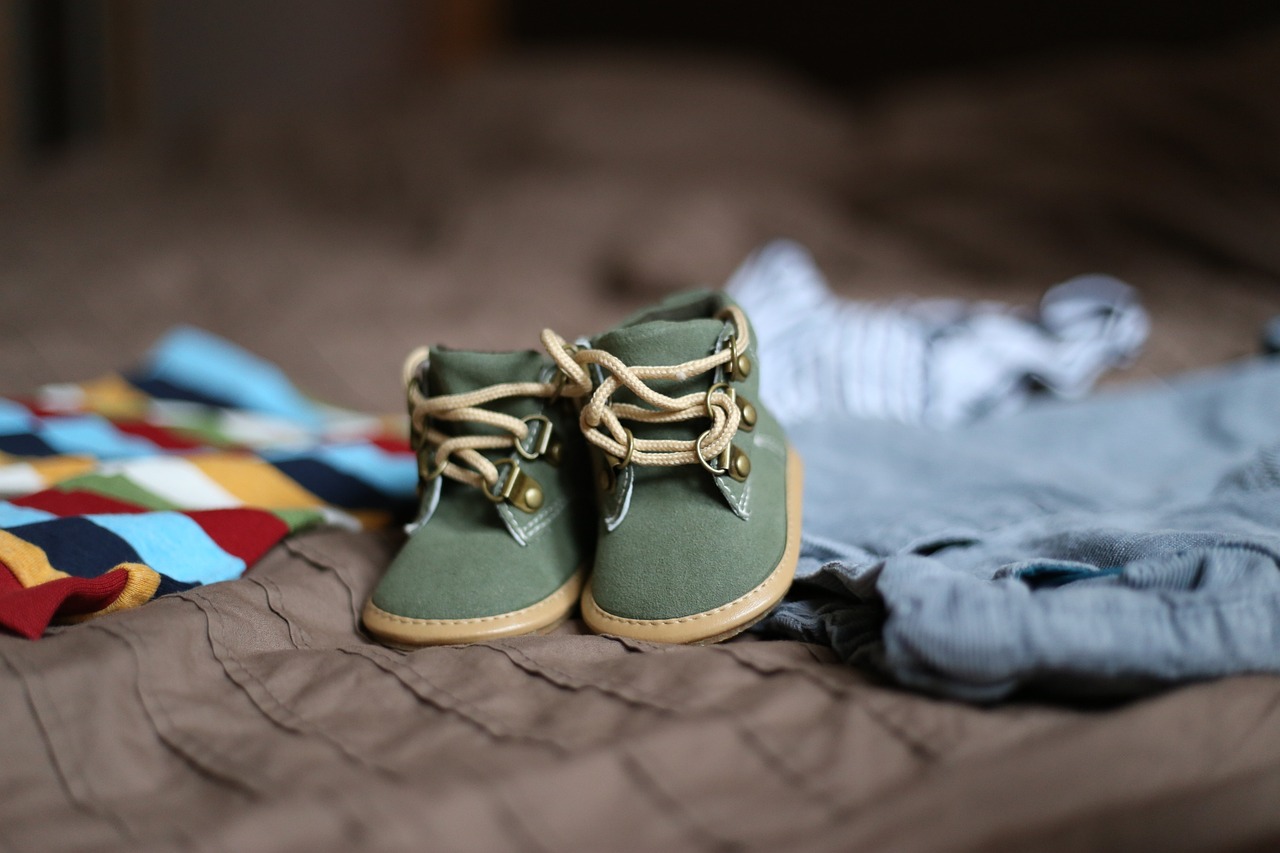
Understanding Upcycling
Upcycling is more than just a trendy buzzword; it's a powerful movement that encourages us to rethink how we view waste. At its core, upcycling involves transforming discarded materials into new products that are of higher quality or value. Instead of tossing out that old shirt or those worn-out jeans, upcycling gives you the chance to breathe new life into them, turning them into something unique and functional. In a world where fast fashion reigns supreme, this practice promotes sustainability by reducing textile waste and minimizing our environmental footprint.
Imagine your closet as a treasure chest rather than a landfill. Each piece of clothing has the potential to evolve into something new and exciting. By embracing upcycling, you’re not only saving money but also making a conscious choice to support the planet. Did you know that the fashion industry is one of the largest polluters in the world? By engaging in upcycling, we can combat this issue by:
- Reducing the demand for new materials
- Extending the lifecycle of garments
- Encouraging creativity and personal expression
Moreover, upcycling fosters a sense of community. Many local groups and online forums are dedicated to sharing ideas and techniques for transforming old garments. Whether you’re swapping tips on how to turn a pair of jeans into a stylish bag or sharing your latest DIY project on social media, the sense of camaraderie and support is palpable. It's like a modern-day crafting circle, where everyone can contribute and learn from one another.
As we delve deeper into the world of upcycling, it's important to recognize its significance in the broader context of environmental sustainability. By choosing to upcycle, we are actively participating in a circular economy, where products are reused and repurposed rather than discarded. This shift not only conserves resources but also fosters innovation in design and production methods. In essence, upcycling is a celebration of creativity and resourcefulness, allowing us to transform what might seem like trash into treasure.
In conclusion, understanding upcycling is about more than just sewing and crafting. It’s a mindset that encourages us to see potential in the old and the discarded. As we continue to explore various upcycling projects in this article, keep in mind the impact each small action can have on our environment and our lives. The journey of upcycling is not just about creating something new; it's about making a statement that we care about our planet and the legacy we leave behind.

Essential Tools for Upcycling
When it comes to upcycling clothing, having the right tools can make all the difference between a frustrating experience and a rewarding creative journey. Think of your tools as the magic wands of your sewing adventures; they can transform the ordinary into the extraordinary! Before diving into your upcycling projects, it's essential to gather some key supplies that will not only ease the process but also enhance your creativity. So, what do you need to get started?
First and foremost, a good sewing machine is a vital investment for anyone serious about upcycling. While hand sewing can be a delightful experience, a sewing machine can save you time and effort, especially when dealing with thicker fabrics like denim. If you're new to sewing machines, don't worry! Many models are user-friendly and come with helpful features. Pair your machine with a set of quality needles that are appropriate for the types of fabrics you'll be working with. For example, universal needles are great for most projects, while ballpoint needles work wonders on knits.
In addition to a sewing machine, you’ll need a reliable cutting tool. A sharp pair of fabric scissors is essential for clean cuts, and a rotary cutter can be a game-changer for precise lines. To ensure accuracy, consider investing in a cutting mat as well. This will protect your surfaces and keep your blades sharp. Also, don’t forget about measuring tools like a tape measure or a ruler; precision is key in sewing, and these tools will help you achieve the perfect fit.
Another important aspect of upcycling is the use of pins or clips. These little helpers keep your fabric layers in place while you sew, preventing any unwanted shifts that could ruin your hard work. If you’re working with thicker materials, fabric clips might be more effective than traditional pins. To add a touch of flair to your projects, consider having a selection of threads in various colors. Matching your thread to your fabric can elevate your design, while contrasting colors can create a bold statement.
Finally, let’s not overlook the importance of a good iron and an ironing board. Pressing your seams as you go can make a world of difference in the final appearance of your projects. Wrinkles can hide the beauty of your creations, so take the time to give them a good press. For those intricate details, having a seam ripper handy can save the day when you need to undo a mistake. Remember, every great upcycler has faced challenges, and having the right tools can help you overcome them.
Here’s a quick summary of the essential tools you'll need for your upcycling journey:
| Tool | Description |
|---|---|
| Sewing Machine | Facilitates quick and efficient sewing. |
| Fabric Scissors | For clean and precise cuts. |
| Cutting Mat | Protects surfaces and keeps blades sharp. |
| Measuring Tools | Ensures accuracy in your projects. |
| Pins/Clips | Keeps fabric layers in place while sewing. |
| Iron | Helps to press seams and eliminate wrinkles. |
| Seam Ripper | For undoing mistakes. |
Gathering these tools will set you up for success as you embark on your upcycling journey. Remember, the right tools not only make the process smoother but also enhance your creativity, allowing you to express your unique style through your transformed garments. So, are you ready to take your old clothes and turn them into something fabulous?
Q: Do I need to be an expert in sewing to start upcycling?
A: Not at all! Upcycling is about creativity and experimentation. Start with simple projects and gradually work your way up as you gain confidence.
Q: Can I upcycle any type of clothing?
A: Yes! Almost any garment can be upcycled. Just consider the fabric and structure to determine what new life you can give it.
Q: What if I don’t have a sewing machine?
A: While a sewing machine makes the process easier, many projects can be completed by hand sewing. Just be patient and take your time!
Q: Where can I find inspiration for upcycling projects?
A: Social media platforms like Pinterest and Instagram are treasure troves of upcycling ideas. You can also check out blogs and DIY websites for tutorials!
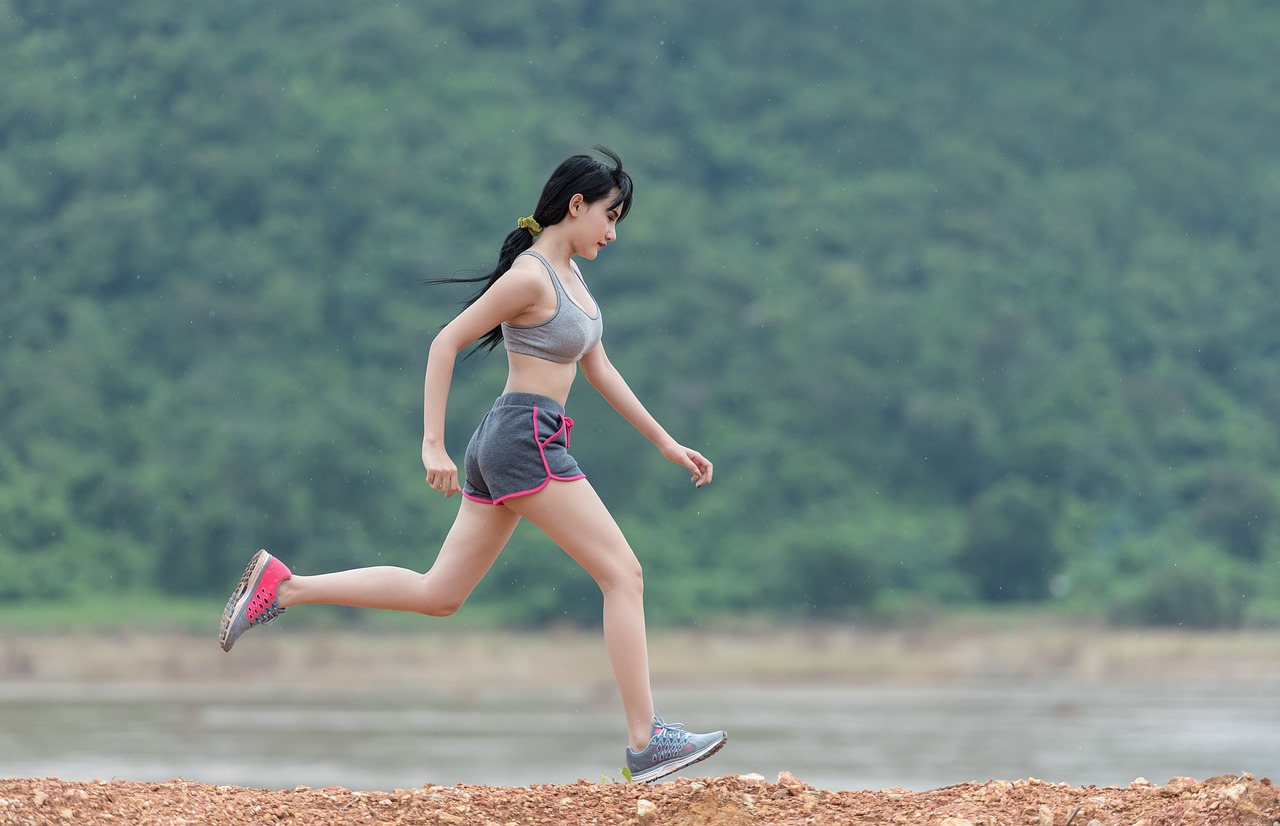
Simple Sewing Techniques
When it comes to upcycling clothing, mastering some can truly unlock your creativity. Think of these techniques as the building blocks of your crafting journey. Whether you're a seasoned sewist or just starting, these fundamental skills will empower you to transform old garments into something fresh and fabulous. So, let’s dive into the essential techniques that can elevate your upcycling game!
First up is stitching. This technique is the backbone of any sewing project. Whether you're using a sewing machine or hand-stitching, knowing how to create a strong, even stitch is crucial. A straight stitch is often the go-to for most projects, but don't underestimate the power of a zigzag stitch, especially when working with stretchy fabrics. It's like the difference between a sturdy bridge and a flimsy rope; you want your seams to hold strong!
Next, we have hemming. This technique is essential for finishing edges and preventing fraying. It’s like giving your garment a polished look. There are various hemming methods, such as the blind hem, which is perfect for a clean finish on pants or skirts, and the double-fold hem, which is a bit sturdier. If you’ve ever wondered how to make your DIY projects look professionally finished, mastering hemming is a must!
Another important technique is patching. This is not just about fixing holes; it's a fantastic way to add character to your garments. Imagine transforming a worn-out knee into a stylish statement with a fun patch or fabric scrap. Patching can be done in various styles, from simple squares to intricate designs, allowing you to express your personality through your clothing. It's like turning a blemish into a beauty mark!
Now, let’s talk about the tools you'll need for these techniques. Having the right supplies can make all the difference. Here’s a quick overview of some must-have tools:
| Tool | Purpose |
|---|---|
| Sewing Machine | For quick and precise stitching. |
| Needles | Different sizes for various fabrics. |
| Thread | Choose colors that match or contrast for style. |
| Scissors | For cutting fabric and threads cleanly. |
| Measuring Tape | To ensure accurate cuts and measurements. |
By gathering these tools, you’ll set yourself up for success. Remember, upcycling is not just about creating new items; it's about having fun and experimenting with what you have. Don't be afraid to make mistakes; they can lead to unexpected and delightful results. Think of each project as a new adventure, where every stitch tells a story.
In the world of upcycling, the only limit is your imagination. So, whether you're stitching, hemming, or patching, embrace these simple sewing techniques and watch as your old clothes transform into something extraordinary. Ready to get started? Grab your tools and let the magic of upcycling unfold!
- What is upcycling? Upcycling is the process of creatively reusing old materials to create new products of higher quality or value.
- Do I need a sewing machine for upcycling? While a sewing machine can speed up the process, many upcycling projects can be done by hand.
- What types of fabric are best for upcycling? Look for durable fabrics like denim, cotton, and linen, which can withstand multiple transformations.
- Can I upcycle clothing without sewing? Yes! You can use fabric glue, safety pins, or even no-sew techniques to create new items.

Hand Sewing vs. Machine Sewing
When it comes to upcycling clothing, one of the first decisions you'll face is whether to use hand sewing or a sewing machine. Both methods have their own unique advantages and can be suitable for different types of projects. Understanding these differences can help you choose the best approach for your creative endeavors. Hand sewing offers a level of precision and control that can be particularly beneficial for intricate designs or delicate fabrics. Imagine the satisfaction of meticulously stitching each piece together, ensuring every detail is just right. Plus, it's a great way to unwind and connect with your materials on a personal level.
On the other hand, machine sewing can significantly speed up the process, allowing you to tackle larger projects or multiple items in a shorter amount of time. If you've got a pile of old jeans waiting to be transformed into trendy shorts, a sewing machine might just be your best friend. However, it’s essential to note that machine sewing can sometimes be less forgiving, especially if you're not familiar with the settings or the fabric you're working with. A misaligned seam or a skipped stitch can lead to frustration, but with practice, you can master the machine and unleash your creativity.
Here’s a quick comparison of both methods to help you decide:
| Criteria | Hand Sewing | Machine Sewing |
|---|---|---|
| Speed | Slower, but allows for detailed work | Faster, ideal for larger projects |
| Control | High, great for intricate designs | Moderate, can be tricky with delicate fabrics |
| Portability | Very portable, requires minimal tools | Less portable, requires a machine |
| Learning Curve | Easy to start, but mastering takes time | Can be daunting for beginners |
Ultimately, the choice between hand sewing and machine sewing comes down to personal preference and the specific requirements of your project. You might find that a combination of both methods works best for you. For instance, you could use a sewing machine for the bulk of your project and then hand sew the finishing touches for that extra flair. The beauty of upcycling is that it allows you to experiment and find what suits your style and workflow the best.
So, whether you choose to pick up a needle and thread or fire up the sewing machine, the important thing is to enjoy the process. Each stitch you make is a step towards giving new life to old garments, and that’s a rewarding journey in itself!
- What materials do I need for hand sewing? Basic materials include needles, thread, scissors, and pins. You may also want a thimble for extra protection.
- Can I use a sewing machine for all types of fabric? While most fabrics can be sewn with a machine, some delicate materials may require special needles or settings.
- How do I know which method is best for my project? Consider the complexity of your design, the fabric type, and your comfort level with each method.
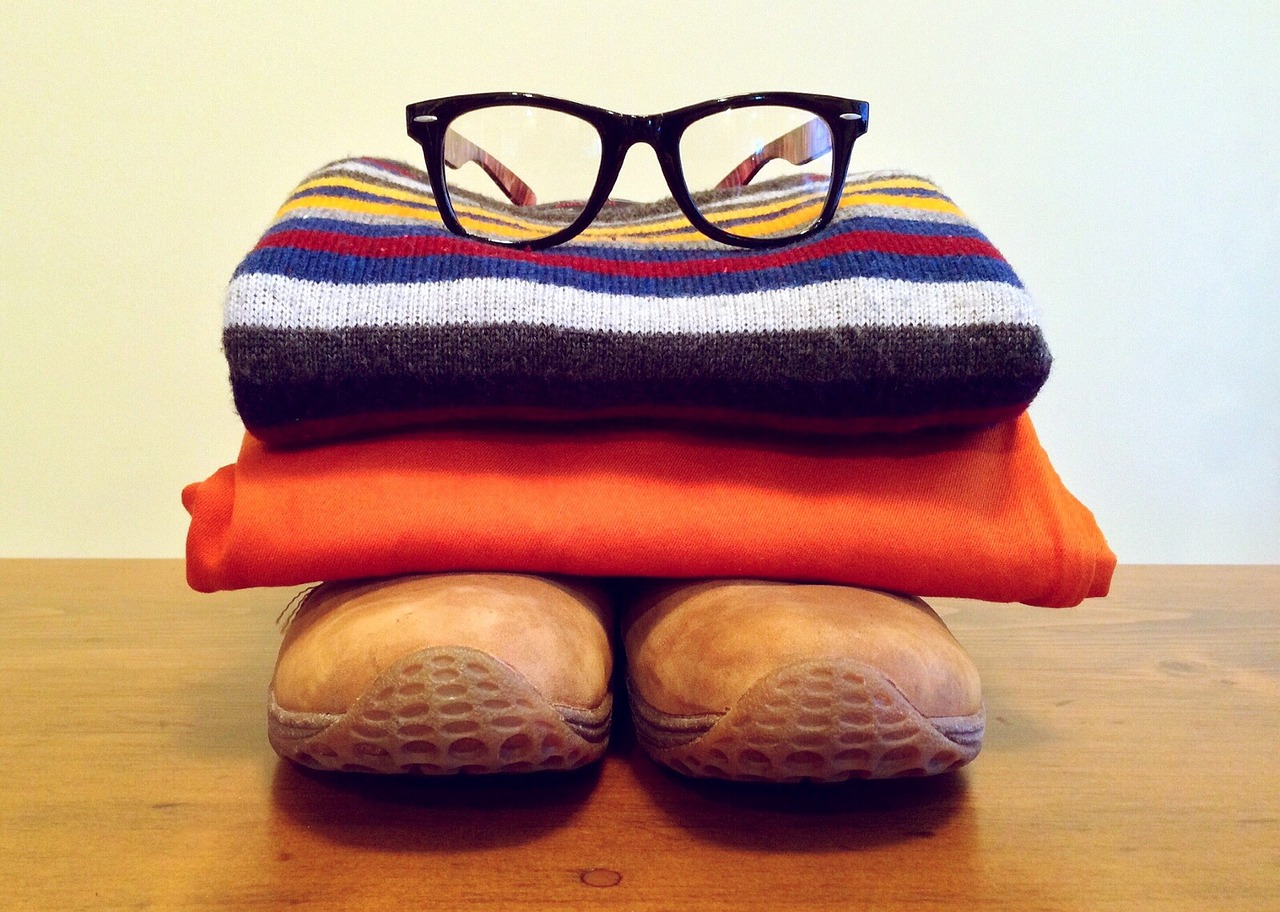
Choosing the Right Fabric
When it comes to upcycling clothing, selecting the right fabric is crucial for ensuring your projects are not only aesthetically pleasing but also durable and functional. Think of fabric as the canvas for your masterpiece; the quality and type of material can make or break your creation. So, how do you choose wisely? Let's dive into some essential tips!
First off, consider the original garment you’re working with. Is it made of cotton, polyester, or perhaps a blend? Each type of fabric has its own characteristics. For instance, cotton is breathable and easy to sew, making it a favorite for many DIY enthusiasts. On the other hand, polyester is more resistant to wrinkles and fading, which might be a better choice for items that will see a lot of wear and tear.
Next, take a moment to think about the intended use of your upcycled piece. Are you transforming an old t-shirt into a trendy tote bag? Or perhaps turning a pair of jeans into a stylish skirt? Understanding the purpose will guide you in selecting a fabric that suits your needs. For example, if you're making a bag, you might want to opt for a heavier cotton or denim for added durability.
Another important factor is the weight of the fabric. Fabrics come in various weights, and choosing the right one can significantly impact the outcome of your project. Here’s a quick breakdown:
| Fabric Weight | Best For |
|---|---|
| Lightweight (e.g., chiffon, silk) | Flowy garments, linings |
| Medium weight (e.g., cotton, linen) | Tops, skirts, bags |
| Heavyweight (e.g., denim, canvas) | Outerwear, bags, upholstery |
Additionally, don't forget to check the condition of the fabric. When upcycling, you might come across garments that have seen better days. Look for any signs of wear and tear, such as holes or fraying edges. If the damage is minimal, you can often incorporate it creatively into your design. For example, a small hole in a t-shirt could be turned into a stylish patch or decorative element!
Lastly, consider the color and pattern of the fabric. This is where your creativity can really shine! Mixing and matching different colors and patterns can result in unique and eye-catching designs. Just remember, while bold patterns can be fun, they can also be overwhelming if not balanced correctly. So, if you’re uncertain, start with a solid color as your base and add patterns as accents.
In conclusion, choosing the right fabric for your upcycling projects is all about understanding your materials and envisioning the final product. With the right fabric, your old garments can be transformed into stunning, functional pieces that not only look great but also tell a story of sustainability and creativity. Happy upcycling!
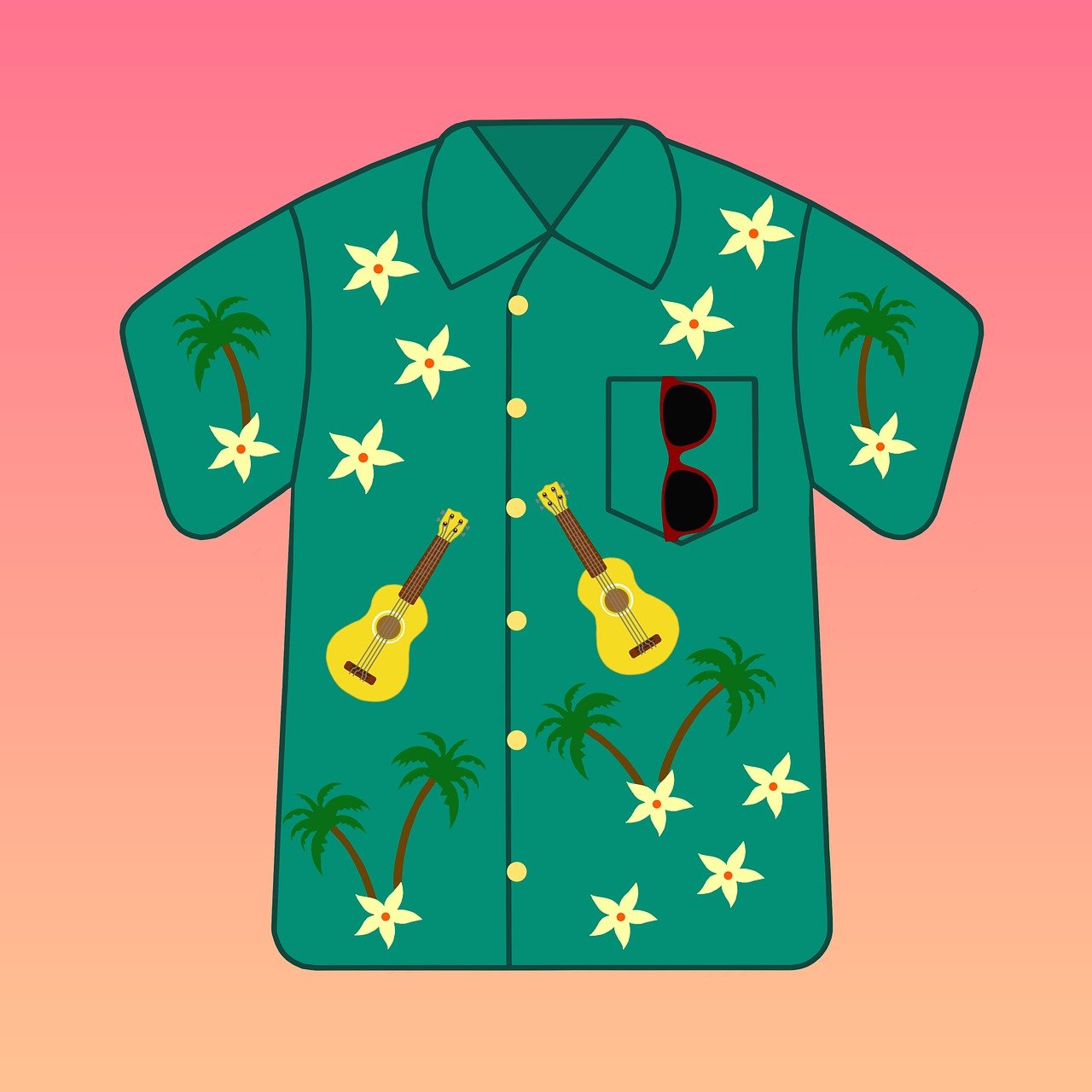
Creative Upcycling Project Ideas
When it comes to upcycling, the possibilities are as vast as your imagination! Transforming old clothing into trendy, functional pieces not only saves money but also helps reduce waste. So, let’s dive into some creative project ideas that will inspire you to give your wardrobe a fresh twist. Whether you're a sewing novice or a seasoned pro, there’s something here for everyone.
One of the most versatile garments in your closet is the humble T-shirt. With a little creativity, you can turn those old tees into fabulous new items. For instance, consider making a tote bag. Simply cut off the sleeves, sew the bottom shut, and voilà! You have a stylish bag perfect for grocery shopping or a day at the beach. Alternatively, if you're feeling a bit more adventurous, you can transform a T-shirt into a trendy crop top. Just cut it to your desired length, hem the edges, and you’re ready to rock that summer look!
Next up, let’s talk about jeans. We all have those pairs that have seen better days, but don’t toss them just yet! Old jeans can be your canvas for creativity. One popular project is making a denim skirt. Simply cut the legs off at your desired length, and then use the remaining fabric to create a waistband. If skirts aren’t your style, how about transforming those jeans into shorts? Just cut them to your preferred length, fray the edges for a chic look, and you’re set for summer! You can even go a step further and make a versatile denim bag by sewing the pockets together and adding a strap.
But wait, there’s more! Have you ever thought about using old sweaters? They can be transformed into cozy pillow covers. Just cut the sweater to the size of your pillow, sew the edges, and you’ll have a unique piece that adds warmth to your living space. Additionally, you can create mittens from the sleeves of a sweater. Cut the sleeves to your desired length, sew the ends closed, and you’ll have a fashionable way to keep your hands warm.
For those with a flair for the artistic, consider patchwork projects. Gather up your fabric scraps and old clothes to create a beautiful patchwork quilt. This project not only showcases your sewing skills but also allows you to cherish memories associated with each piece of fabric. You can even create a wall hanging or a decorative throw using the same concept. The beauty of patchwork is that it tells a story, making it a unique addition to your home.
In summary, the world of upcycling is brimming with potential. From T-shirts to jeans and sweaters, every piece of clothing can be transformed into something new and exciting. The key is to embrace your creativity and not be afraid to experiment. Remember, each project is a chance to express your personal style while contributing to a more sustainable future.
Q: What are some beginner-friendly upcycling projects?
A: Great question! Some easy projects include making tote bags from T-shirts, turning old jeans into shorts, or creating pillow covers from sweaters. These projects require minimal sewing skills and can be completed in a short time.
Q: How do I choose the right fabric for upcycling?
A: When selecting fabric, consider durability and texture. Look for materials that are in good condition and can withstand wear. It’s also wise to choose fabrics that complement each other if you’re working on patchwork projects.
Q: Can I upcycle clothing without sewing?
A: Absolutely! You can use fabric glue for no-sew projects or even tie-dye old garments for a fresh look. Upcycling is all about creativity, so feel free to explore different techniques!
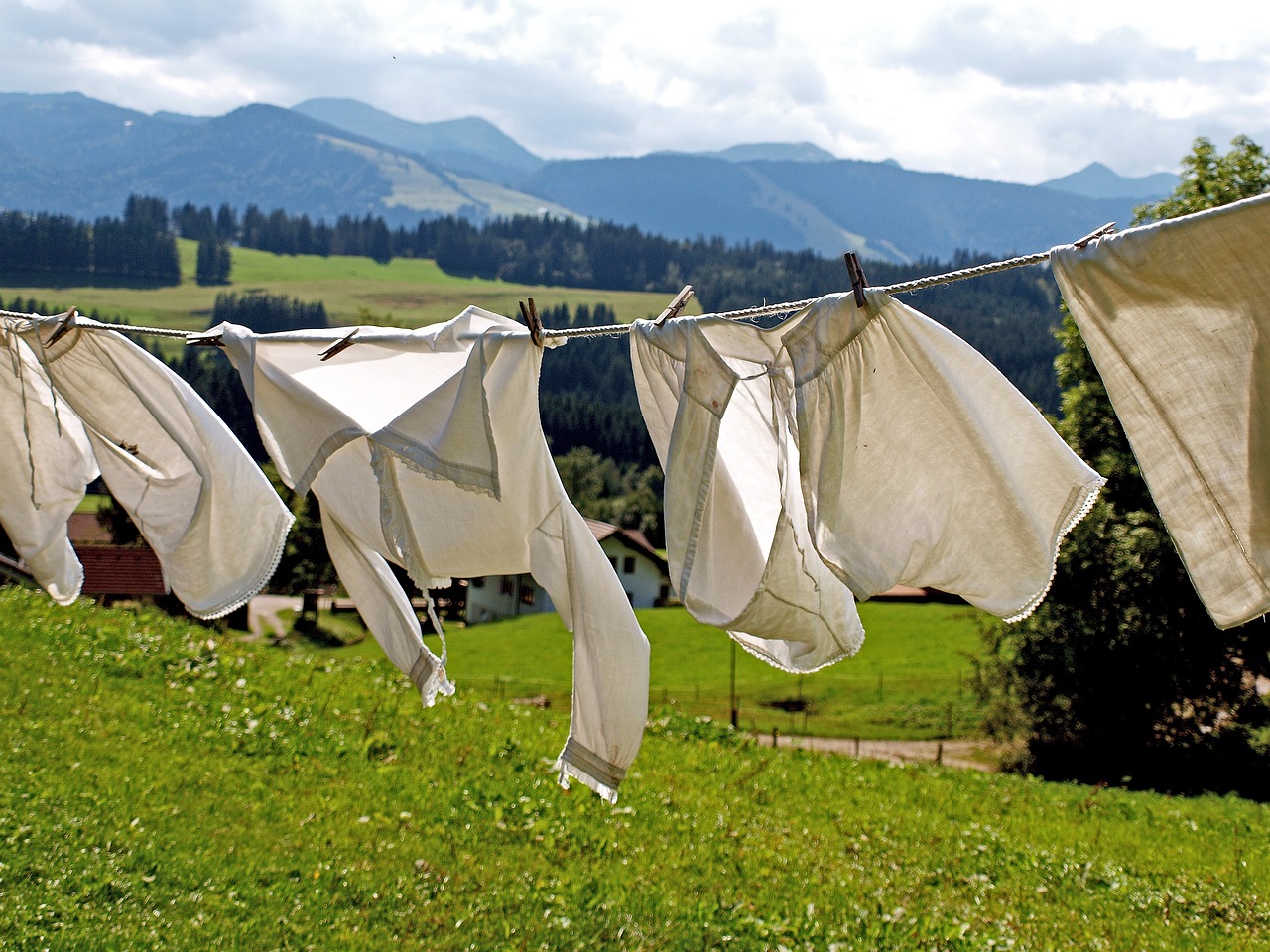
Transforming T-Shirts
When it comes to upcycling, T-shirts are the ultimate canvas for creativity. They are not only abundant in most people's wardrobes, but they also offer endless possibilities for transformation. Think about it: that old band tee you never wear anymore or the oversized shirt that’s just collecting dust can be turned into something entirely new and fabulous! With just a few simple sewing techniques, you can breathe new life into these garments and create unique pieces that reflect your personal style.
One of the most popular projects is making a tote bag from a T-shirt. It’s incredibly simple and requires minimal sewing skills. Just cut off the sleeves and neckline, then stitch the bottom closed. Voila! You have a stylish, eco-friendly tote that’s perfect for grocery shopping or a day at the beach. Not only are you reducing waste, but you’re also creating a functional item that you can use every day.
Another fun idea is to turn your T-shirts into crop tops. With the right cut, you can transform a long shirt into a trendy piece that pairs perfectly with high-waisted jeans or skirts. Simply cut the shirt to your desired length, and if you want to add a little flair, consider adding some fringe or lace at the bottom. This simple alteration can make a huge difference, and it’s a great way to showcase your sewing skills.
For those who love a bit of nostalgia, consider creating a memory quilt from old T-shirts. This project is not only a great way to preserve memories but also a fantastic way to repurpose shirts that hold sentimental value. You can cut squares from each shirt and sew them together to create a cozy quilt that tells your story. Imagine snuggling under a blanket made from your favorite concert tees or family vacation shirts!
Here’s a quick breakdown of some popular T-shirt upcycling projects:
| Project | Description |
|---|---|
| Tote Bag | Transform a T-shirt into a reusable bag by cutting off the sleeves and sewing the bottom. |
| Crop Top | Cut a T-shirt to your desired length for a trendy crop top; add embellishments for flair. |
| Memory Quilt | Use squares from old T-shirts to create a quilt that preserves memories. |
In conclusion, transforming T-shirts is not just about recycling; it’s about creativity and expressing your individuality. So, the next time you find yourself staring at a pile of old tees, think twice before tossing them out. With a little imagination and some basic sewing skills, you can create something truly special and sustainable!
Q: What tools do I need for T-shirt upcycling?
A: Basic sewing supplies such as scissors, a sewing machine (or needle and thread for hand sewing), and fabric pins are essential. You may also want to have some embellishments like fabric paint or patches on hand to personalize your creations.
Q: Can I upcycle any type of T-shirt?
A: Absolutely! Any T-shirt can be upcycled, but consider the fabric's quality and condition. Thicker cotton shirts tend to hold up better in projects like bags or quilts.
Q: Do I need to be an experienced sewer to upcycle T-shirts?
A: Not at all! Many T-shirt upcycling projects are beginner-friendly. Start with simple transformations and gradually take on more complex designs as you build your confidence.

Revamping Jeans
Old jeans are like a blank canvas just waiting for your creative touch! Instead of tossing those worn-out pairs into the trash, why not transform them into something fabulous? The beauty of denim lies in its versatility; it can be reimagined in countless ways. From chic skirts to trendy bags, the possibilities are endless. Imagine taking those jeans that have seen better days and turning them into a stylish accessory that not only looks great but also tells a story of sustainability.
One popular project is creating a denim skirt. To achieve this, you can simply cut the legs off your jeans at your desired length and then sew the hem to prevent fraying. If you’re feeling adventurous, consider adding patches or embellishments to give it a unique flair. You could even combine different denim pieces for a patchwork effect that’s both eye-catching and trendy.
Another fun idea is to make denim shorts. This project is perfect for those hot summer days when you want to stay cool while looking fashionable. Just cut the jeans to your preferred length, fray the edges for a laid-back vibe, and voila! You have a new pair of shorts that are not only stylish but also a testament to your creativity.
If you're looking for something a bit more practical, consider crafting a denim bag. This project can be as simple or as complex as you want it to be. Start by cutting the legs off your jeans, then sew the bottom shut to create a pouch. You can add straps using the waistband or leftover fabric, and even customize it with pockets from the original jeans for added functionality. This way, you not only reduce waste but also create a functional piece that you can use daily.
Don't forget about the little details that can make your revamped jeans truly special. Adding embellishments like buttons, beads, or even fabric paint can elevate your project. Think of it as giving your old jeans a second life, where each stitch and embellishment adds character and charm. Upcycling is not just about saving the environment; it’s also about expressing yourself and showcasing your unique style.
In summary, revamping jeans is a fantastic way to breathe new life into your wardrobe while embracing sustainability. Whether you choose to create a skirt, shorts, or a bag, the key is to let your imagination run wild. So grab those old jeans, and let’s get crafting!
- What tools do I need for revamping jeans? You’ll need basic sewing supplies like scissors, a sewing machine or needle and thread, fabric glue, and any embellishments you wish to add.
- Can I upcycle jeans that have holes in them? Absolutely! Holes can be incorporated into your design, or you can patch them up with contrasting fabric for a trendy look.
- How do I prevent fraying when cutting jeans? To prevent fraying, you can sew a zigzag stitch along the cut edge or use fabric glue to seal the edges.
- Are there any specific techniques I should know? Basic sewing techniques like stitching, hemming, and patching are essential. You can also learn about distressing techniques for an edgy look.
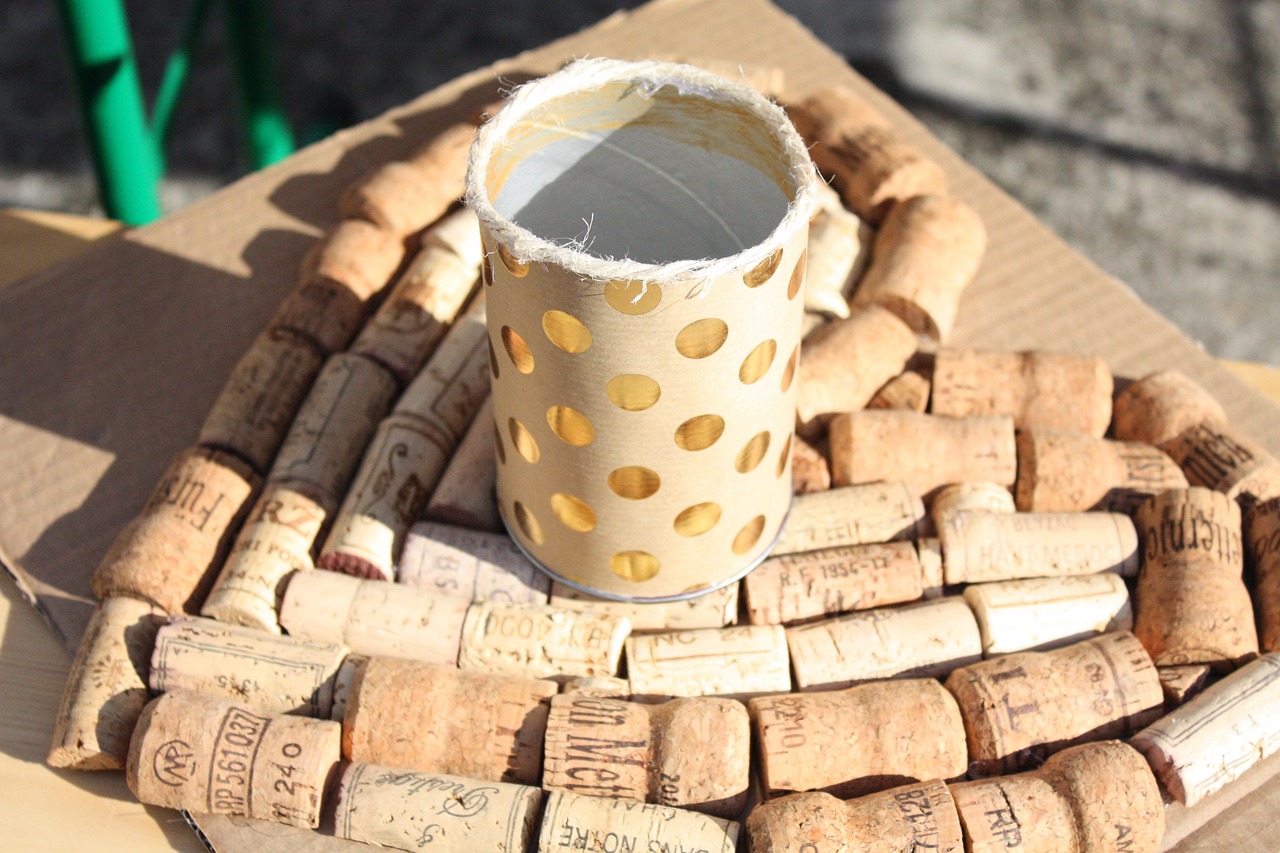
Tips for Successful Upcycling
Embarking on an upcycling journey can be both exciting and daunting. To ensure your projects are successful and enjoyable, there are a few essential tips to keep in mind. First and foremost, planning is key. Before diving into your project, take a moment to visualize what you want to create. Sketching out your ideas or even creating a mood board can help clarify your vision. This way, you won’t find yourself lost halfway through, wondering what your original goal was!
Another important aspect is choosing the right garments to upcycle. Not all clothing is created equal when it comes to transformation. Look for items that have good fabric quality and are free from major damage. For instance, a faded but sturdy pair of jeans can be a goldmine for creative projects, while a tattered shirt may not yield the best results. Remember, your goal is to create something stylish and functional, so select wisely!
As you start your upcycling projects, keep in mind that patience is a virtue. You might not get everything right on the first try, and that’s perfectly okay! Embrace the learning process and don’t be afraid to make mistakes. Each error is a stepping stone to mastering your skills. If you find yourself stuck, take a break and revisit your project with fresh eyes. Sometimes, a little distance can spark new ideas.
When it comes to execution, quality over quantity should be your mantra. It’s tempting to rush through projects, especially if you’re eager to see the final product. However, taking your time to ensure that each stitch is secure and each cut is precise will pay off in the long run. This attention to detail can elevate your work from amateur to professional, making your creations something you’ll be proud to show off.
Finally, don’t forget to celebrate your successes, no matter how small! Share your creations on social media or with friends and family. This not only boosts your confidence but also inspires others to embark on their own upcycling adventures. Plus, you might even discover a community of like-minded individuals who share your passion for sustainability and creativity.
To wrap up, let’s address some common questions that might arise as you venture into the world of upcycling:
- What materials are best for upcycling? Look for durable fabrics such as cotton, denim, and linen. These materials tend to hold up better during transformations.
- Do I need special tools for upcycling? While basic sewing tools like needles, thread, and scissors are essential, having a sewing machine can make the process faster and more efficient.
- Can I upcycle clothing that doesn't fit? Absolutely! Upcycling is a fantastic way to alter garments that no longer fit, turning them into something new and wearable.
Frequently Asked Questions
- What is upcycling and why is it important?
Upcycling is the creative process of transforming old or discarded materials, particularly clothing, into new products of better quality or value. It's important because it helps reduce waste, promotes sustainability, and encourages a more eco-friendly approach to fashion. By upcycling, you can give new life to garments that would otherwise end up in landfills.
- What tools do I need to start upcycling clothing?
To kick off your upcycling journey, you'll need some essential tools. These include a sewing machine (or needle and thread for hand sewing), fabric scissors, pins, measuring tape, and an iron. Having these tools ready will make your projects smoother and more enjoyable, allowing you to focus on unleashing your creativity!
- Can I upcycle any type of clothing?
Absolutely! Almost any type of clothing can be upcycled, but some pieces are more versatile than others. T-shirts, jeans, and dresses are particularly good candidates for transformation. Just remember to choose garments that you love or that have good fabric quality, as they will make your upcycling projects more successful.
- What are some simple upcycling project ideas for beginners?
If you're just starting out, consider easy projects like turning old t-shirts into tote bags or making headbands from fabric scraps. You can also try cutting jeans into shorts or adding patches to worn-out clothing. These projects are not only simple but also allow you to practice your sewing skills while creating something stylish!
- How do I choose the right fabric for my upcycling projects?
Choosing the right fabric is key to a successful upcycling project. Look for durable materials that can withstand wear and tear. Consider repurposing existing garments with good quality fabric, and don't be afraid to mix and match textures and patterns to create unique pieces. Remember, the right fabric can make all the difference!
- What sewing techniques should I learn for upcycling?
Mastering basic sewing techniques is essential for upcycling. Start with fundamental skills like stitching, hemming, and patching. These techniques will elevate your projects and boost your confidence. As you become more comfortable, you can explore more advanced methods to further enhance your upcycling creations!
- Is hand sewing better than machine sewing for upcycling?
It really depends on your personal preference and the project at hand! Hand sewing allows for more precision and control, while machine sewing is faster and more efficient for larger projects. Both methods have their advantages, so feel free to mix them up based on what you’re working on and your skill level.
- What tips can help me succeed in my upcycling projects?
To achieve the best results, plan your projects carefully. Start with a clear idea of what you want to create and gather all necessary materials beforehand. Don't hesitate to experiment and embrace mistakes as part of the learning process. Finally, take your time and enjoy the journey—upcycling is all about creativity and fun!



















